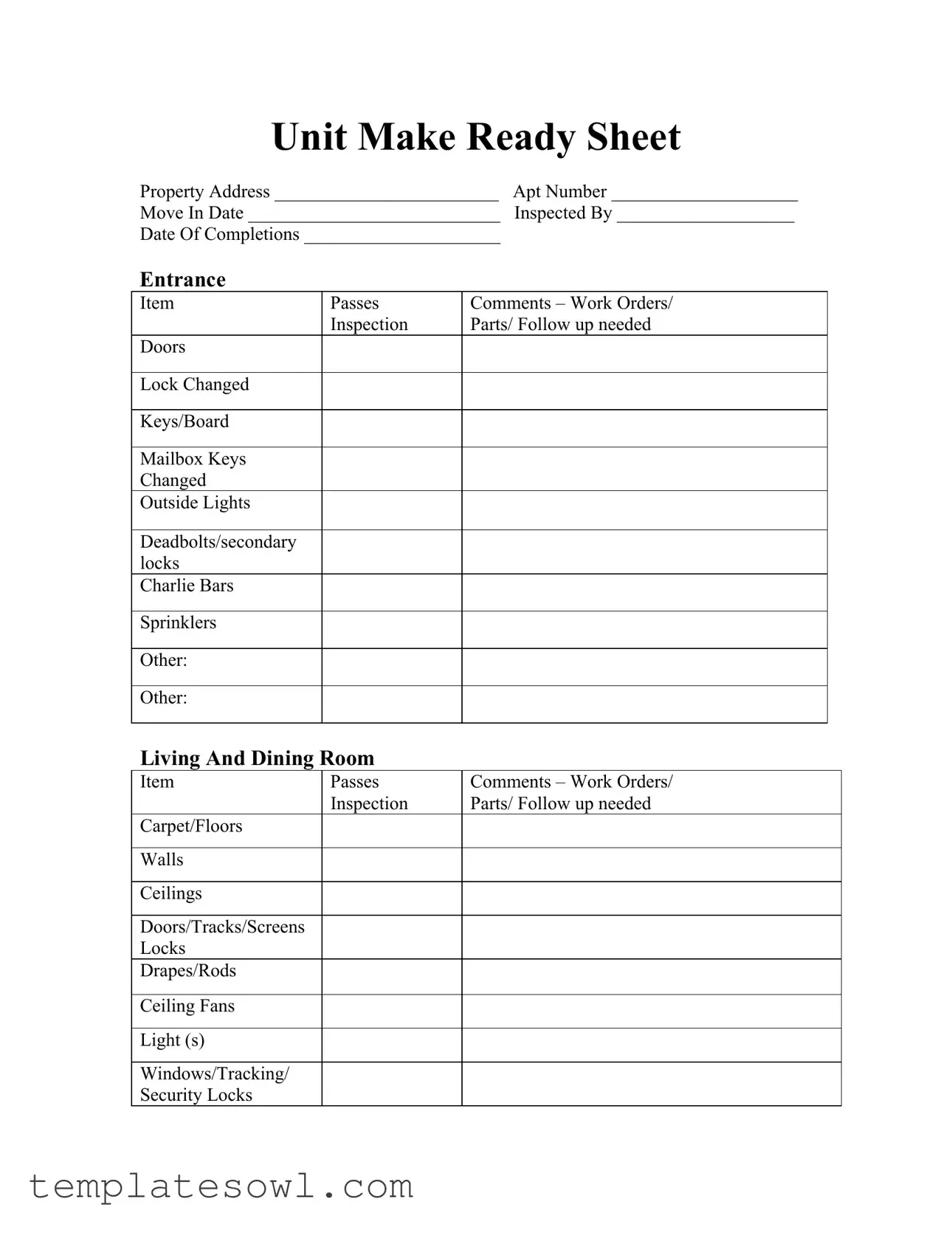The Make Ready Checklist serves as a comprehensive guide to ensure that a rental unit is fully prepared for a new resident. This document outlines various inspection items in different areas of the unit, including kitchens, bathrooms, and bedrooms. It helps property managers and maintenance teams systematically assess the condition of the home and complete any necessary repairs or cleaning prior to move-in.
What does the “Passes” column indicate in the checklist?
The “Passes” column is used to denote whether each item has met the required standards set forth in the checklist. When an item passes inspection, it means it is in good working order and ready for use. If issues are identified, they should be noted in the comments section along with any required work orders for repairs.
What types of repairs or follow-ups may be needed?
Repairs could range from minor fixes, such as replacing light bulbs or cleaning appliances, to more significant issues like plumbing leaks or flooring replacements. The comments section is essential for detailing what specific repairs are needed, ensuring nothing is overlooked during the preparation process.
How can this checklist help avoid future tenant complaints?
By thoroughly inspecting and addressing all areas of the unit before a new tenant moves in, property managers can significantly reduce the likelihood of future complaints. A well-prepared space offers a positive initial impression and fosters tenant satisfaction, leading to better retention rates.
Is the Make Ready Checklist customizable for different properties?
Yes, while the checklist provides a standard format, it can be customized to suit different types of properties or specific requirements. Property managers can add or modify items based on unique features or tenant needs, ensuring all essential aspects are covered.
What should I do if an item on the checklist fails inspection?
If an item does not pass inspection, immediate attention is necessary. Document the issue in the comments section, and create a work order for any repairs required. It is important to follow up until the item is resolved to ensure the unit is move-in ready.
How often should the Make Ready Checklist be reviewed and updated?
It’s advisable to review and update the Make Ready Checklist regularly, especially after turnover periods. Incorporating feedback from tenants and inspection results can help refine the checklist and make future inspections more efficient.
Can tenants request a copy of the Make Ready Checklist?
While it is not common practice to provide tenants with a copy of the checklist, tenants can certainly ask for transparency about the preparations made before their move-in. Property managers should be prepared to share inspection results if requested or provide an overview of what repairs were completed.
